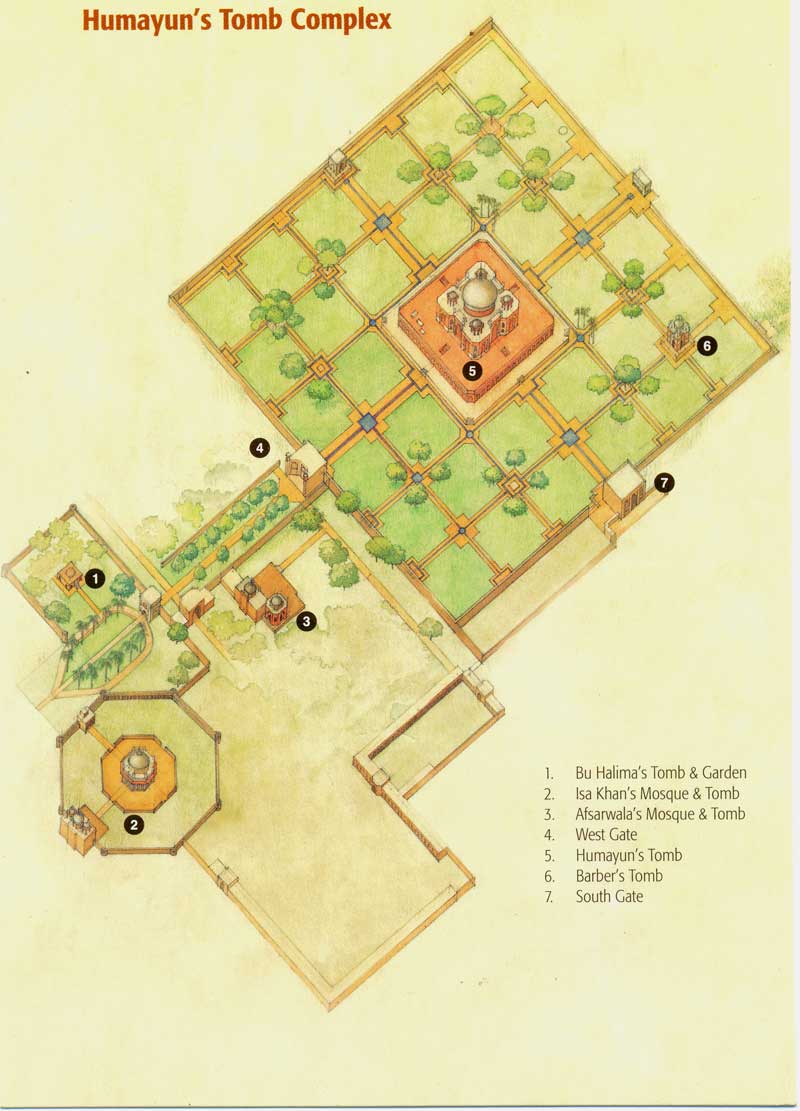
|
|
Humayun's Tomb, New Delhi (1993)
The mausoleum of Humayun is the first mature example of Moghul architecture. If it were compared with the tomb of the Afghan interloper, Sher Shah Suri, who died shortly before Humayun and was buried at Sasaram in Bihar, the contrast is instructive. Sher Shah's tomb (1539-45) marks the culmination of a fifteenth-century style which had been elaborated by the Lodi dynasty and is represented for the last time at Delhi in the tomb of Isa Khan (1547), close alongside the tomb of Humayun. In its most evolved form, the Lodi tomb was an octagonal structure with one or more tiers of pavilions or chhatries piling up to a flat central dome - a trick of design invented in essence long previously at Khajuraho (AD 1000) and elsewhere by the Hindu temple-builders, who had similarly built up the pavilion-roofs of halls and vestibules to support the tall superstructure of the ultimate shrine. The outline of the Lodi tomb was thus strong, and coherent, and its strength was not infrequently emphasised by a ruggedness of masonry that was thinly disguised by plaster work or tiles.
Humayun's Tomb, on the other hand, discards both the elementary symmetry of the Lodi type and its crude stone cutting. The elevations are dominated by two features derived from Persian architecture: the range of three great arches on each side, and the high, emphatic dome. The high dome is achieved by the use of a double shell - a feature which had been used in Persia perhaps as early as the thirteenth-century (Kirman), but now appears for the first time in India. It is still 'supported' by Hindu pavilions, which were indeed to be incorporated wholeheartedly in the Moghul style; but their grouping is less mechanical than in the Lodi-Sher Shah series, and they do not crowd upon and smother the central feature.
In the perfection of the mason's craft the tomb of Humayun likewise established the Moghul standard. Given good freestone, the Indian mason had always shown an unsurpassed skill in the cutting of masonry. The resources of the Moghul patrons ensured henceforth a constant supply of the best stones and marbles in the empire. In Persia the variegation of the surface of a building was almost invariably left to coloured tiles; in India richly coloured stones and traditional craftsmanship were summoned to supply the need. In this as in other respects the Persian master builders of the Moghuls adopted and adapted, and the tomb of Humayun illustrates the process in its early perfection.
(REM WHEELER, Director General of Archaeology in India New Delhi, 1946 in the Preface to S A A Naqvi, Humayun's Tomb and Adjacent Buildings)

|
|